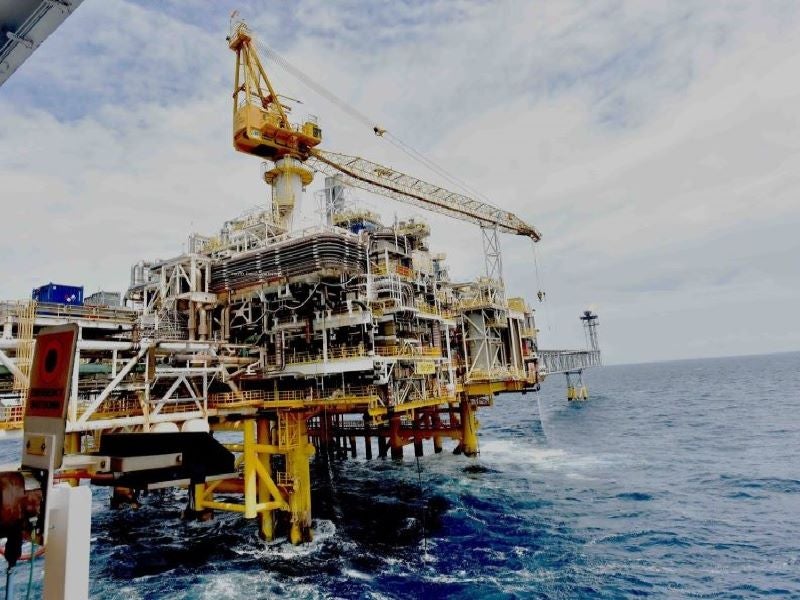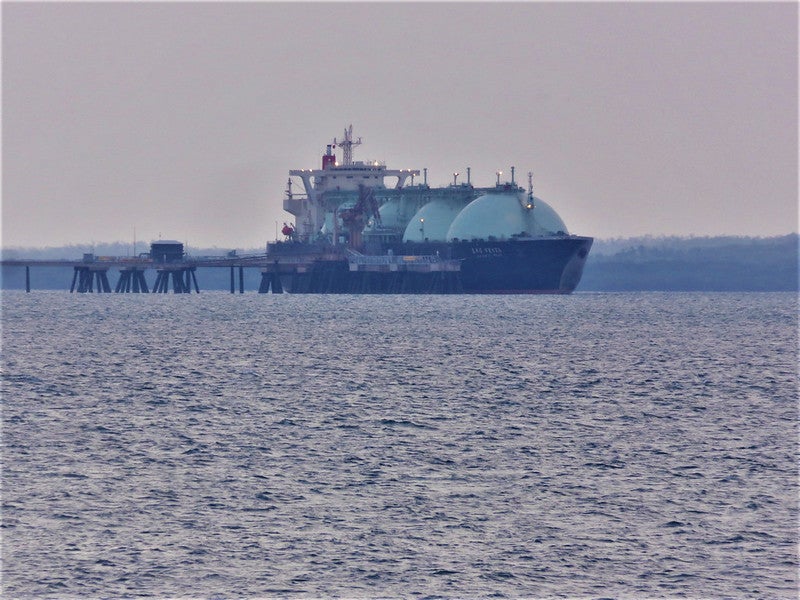Bayu-Undan is a mature gas and condensate field located in Timor Sea, Timor-Leste which has been in production since April 2004.
Santos became the operator of the Bayu-Undan field through the acquisition of ConocoPhillips’ assets in Timor-Leste and northern Australia in May 2020. Following the acquisition, Santos’ interest in the Bayu-Undan field and the associated Darwin LNG project increased from 11.5% to 68.4%.
The other partners in the Bayu-Undan field are Italy’s Eni (11%), Japan’s INPEX (11.4%) and Tokyo Timor Sea Resources (9.2%). Tokyo Timor Sea Resources is a consortium of JERA (6.13%) and Tokyo Gas (3.07%).
Discovered in 1995, the Bayu-Undan field was developed in three phases. Phase one involved a gas recycle (liquids) project which started commercial production of condensate and LPG in April 2004, while the LNG production commenced as part of phase two in February 2006.
The project partners reached a final investment decision on the Phase 3C infill drilling programme to increase the field’s reserves estimate in January 2021. The total investment in the Phase 3C programme is estimated to be approximately £172m ($235m).
Santos agreed to sell a 25% interest in the Bayu-Undan field and Darwin LNG to SK E&S, a South Korea-based energy company, in March 2020. The transaction is expected to be completed after reaching a final investment decision (FID) on the Barossa field development.
Location and field details
The Bayu-Undan is a shallow-water field located in 80m-deep waters, approximately 250km southeast off the coast of Suai, Timor-Leste, in the Timor Sea. The field is situated approximately 500km northwest off the coast of Darwin, Australia.
The Maritime Boundary Treaty between Australia and Timor-Leste was ratified by both the governments in August 2019. As per the treaty, Timor-Leste has sole jurisdiction over the Bayu-Undan upstream facilities and contract area, the export pipeline from Bayu-Undan to Darwin LPG falls under Australia’s jurisdiction.
The Bayu-Undan field produced 114,000 barrels of oil equivalent a day (boed) in 2019. The Phase 3C infill drilling programme is expected to increase the field’s reserves by more than 20 million barrels of oil equivalent (Mboe).
Bayu-Undan field development
The Bayu-Undan field development comprise a drilling, production and processing (DPP) platform,a compression, utilities and quarters (CUQ) platform, a satellite wellhead platform with 12 well slots, and a floating storage and offloading (FSO) facility. The DPP and CUQ platforms are connected by a bridge.
The phase one field development was a gas recycle (liquids) project which involved the processing of the well stream to separate condensate, propane and butane for export to the FSO Liberdade, while re-injecting the drygas into the reservoir.
The phase two field development involved LNG production by supplying the dry gas to the Darwin LNG facility.
The phase three development involved drilling additional wells and utilising the existing infrastructure to extend the field life. A subsea well was brought on stream in 2015, two platform wells and a subsea well subsequently came on stream in 2018.
The phase 3C infill drilling programme will consist of two platform wells and a subsea well. The first well in the phase 3C programme is scheduled to go on stream in Q3 2021.The drilling programme will enable the Darwin LNG plant to continue operations and reduce the offline period before the start of operations of the Barossa field.
Darwin LNG facility
The Darwin LNG liquefaction facility located at Wickham Point, Australia started operations in February 2006.The plant consists of a single train with a capacity to produce 3.7 million tonnes of LNG a year (Mtpa). The quantity of feed gas required to produce 3.7Mtpa of LNG is approximately 177 billion cubic feet (bcf) a year.
The dry gas produced in the Bayu-Undan field is transported through a 502km-long, 26in-diameter pipeline connected to the Darwin LNG plant.
The Barossa field development is expected to extend the life of the Darwin LNG plant by more than 20 years.
Contracts awarded for the Bayu-Undan phase three development
The Noble Tom Prosser jack-up rig was contracted to drill wells for the Phase 3C programme. The drilling of the first well is expected to begin in the second quarter of 2021.
FMC Technologies was awarded a contract to supply the subsea equipment for the Bayu-Undan field phase 3 development project in May 2013. The estimated value of the contract was approximately £17m ($26m). The scope of the contract included the supply of subsea trees, wellheads, jumper kits, and associated control systems.
JDR Cable Systems was contracted to supply the subsea production umbilicals for phase three development of the Bayu-Undan field in January 2014. The contract scope included the supply of three sections of electro hydraulic umbilicals for a total length of approximately 29km.
Contractors involved
Ray McDermott, a subsidiary of McDermott International, was awarded a contract for the development of Bayu-Undan gas recycle project in October 2000.The scope of the contract included the supply, transportation, and installation of two eight-leg jackets, as well as the transport and installation of a wellhead platform, flare tripod, bridges, infield pipelines, anchor system, and the floating storage and offtake vessel (FSO).
Hyundai Heavy Industries, based in Ulsan, South Korea, was awarded the fabrication contract for topsides of the drilling, production and processing platform, as well as the compression, utilities, and quarters platform in October 2000.
Singapore-based Sembawang Marine and Offshore Engineering received a contract to build the wellhead platform and topside in October 2000.
A joint-venture between Clough and Aker Maritime of Norway (ACJV) was contracted to perform offshore hook-up and commissioning of the Bayu-Undan gas recycle production system.
Bechtel Corporation bagged a lump sum turnkey contract for Darwin LNG project in April 2003.
A joint-venture between Multiplex and Saipem was awarded a contract for laying the 502km-long, Bayu Undan-Darwin LNG pipeline in April 2003.





